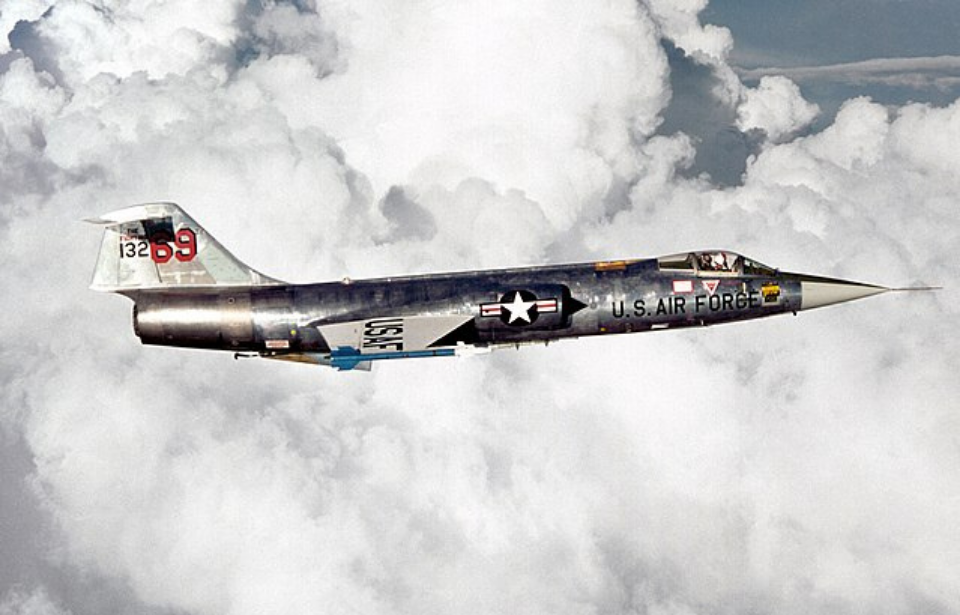Throughout the 20th century, aviation missions grew much safer. That didn’t mean, however, that some aircraft were more safe than others. Following the Korean War, Lockheed designed a plane informed by pilot experience over the previous 20 years.
While the F-104 Starfighter was incredibly fast and simple to use, it also had some serious safety issues. The fighter-bomber and interceptor was involved in so many accidents, in fact, that German pilots referred to it as “The Widow Maker.”
The F-104 Starfighter’s design
The F-104 Starfighter went into development in 1951, after designer Kelly Johnson interviewed a number of Korean War pilots. Taking their opinions to heart, Johnson felt it was important to develop a fighter plane that was lightweight, simple and very fast. This was a departure from the then-current trend of bulkier planes that could carry heavy payloads and fly far distances.
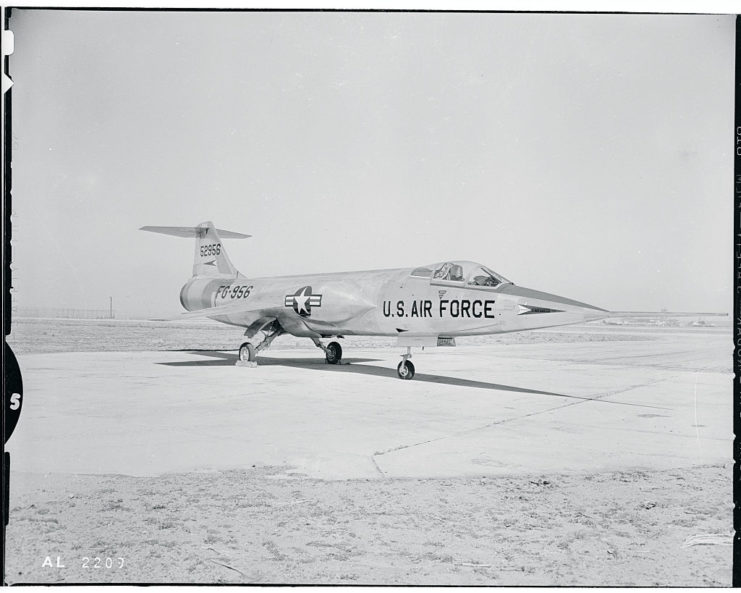
Its design was minimalist. The intention was to start with a powerful engine – General Electric’s J79 turbojet – then wrap around it an airframe that was both light and aerodynamically efficient. One of the more unusual aspects of the aircraft was its ejector seat. Designers feared there wouldn’t be enough power to support an upward ejection. As such, the initial version of the plane featured a downward ejection seat made by Stanley.
Testing the F-104 Starfighter
As the J79 was not yet ready, early prototypes of the F-104 Starfighter were built with the Wright J65 engine, a version of the Armstrong Siddeley Sapphire. The aircraft had its first flight in 1954. Problems were immediately detected and most were resolved. While the first two prototypes were destroyed in crashes, the tests went well enough that 17 more pre-production planes were ordered.
If one thing was proven during the testing phase, it’s that the fighter was incredibly fast. The F-104 was able to fly faster than initial estimates and able to achieve a higher altitude as well.
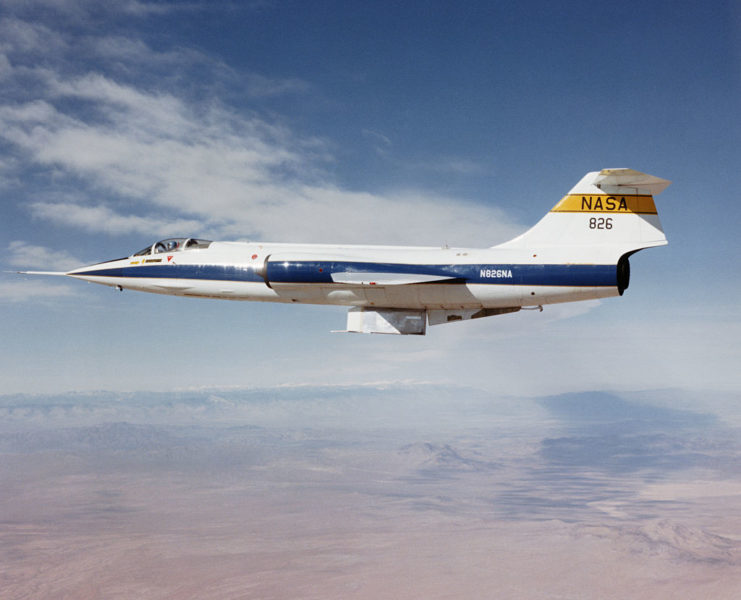
In 1958, Johnson was awarded the Collier Trophy, which he shared with General Electric and the US Air Force. Since 1911, the award has been given each year for the greatest American achievement in aviation or aeronautics. Johnson later said of the F-104, “Did it come up to my designs? In terms of performance, yes. In terms of engine, we went through a great many engine problems, not with the J65s but with the J79s.”
American usage
Not long after the testing phase, the F-104 Starfighter was pressed into service during the Second Taiwan Strait Crisis. Pilots weren’t thrilled with the results, as they preferred jets that could carry bigger payloads and had longer ranges. Still, the Starfighter was again used during the 1961 Berlin Crisis. While the F-104 did not engage with any enemy planes during the operation, it proved to be a solid deterrent, as it was clearly quicker than any other plane in the air.
The Vietnam War, again, saw it utilized as a deterrent. The F-104 tallied no aerial kills during the conflict, but was viewed by the Vietnamese as superior to their own aircraft. As such, they avoided engaging with Starfighters. There were 25 MiG kills by pilots flying Lockheed EC-121 Warning Stars, and the Starfighters that flew as escorts were credited for keeping them safe.
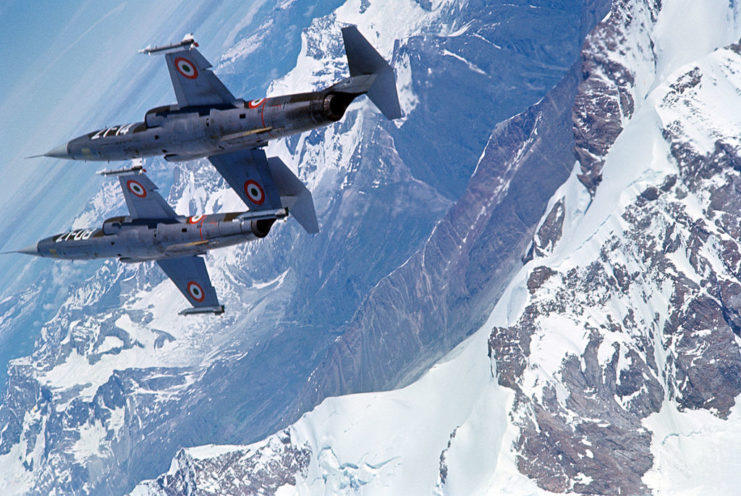
While the Air Force did not use the F-104 for long, other countries did. West Germany, Canada, the Netherlands, Belgium, Japan and Italy all made the jet an important part of their forces. In 1975, the reason why came to light. Lockheed executives had bribed foreign countries to buy their aircraft. These actions led Congress to pass the Foreign Corrupt Practices Act, which prohibited American citizens and companies from bribing foreign officials.
German safety issues
West Germany was one of the countries bribed into buying F-104 Starfighters from Lockheed, purchasing 916 of the aircraft in the late 1960s. It went very badly for them. Over time, 292 of them crashed, resulting in the deaths of 115 pilots. The problem became so severe that German pilots began to refer to the F-104 as “The Widow Maker.”
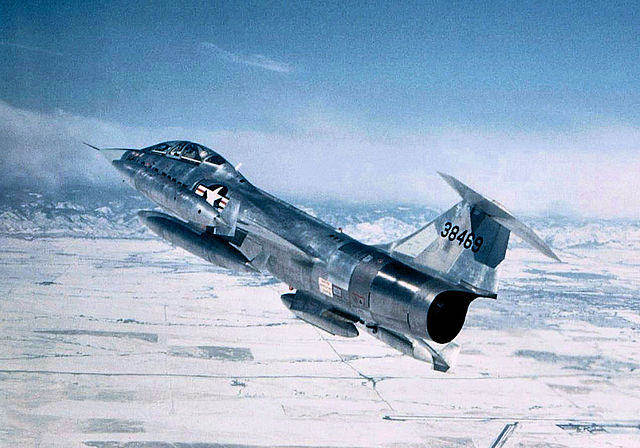
In 1975, Lockheed responded to the crisis by paying out a three million Deutsche Marks settlement to a group of widows. While they did settle with the families, the company refused to admit liability in the case.
Use by NASA and in other space-related endeavors
NASA used F-104 Starfighters from 1956 until 1994, performing high-speed and altitude flight research at Dryden Flight Research Center in California. They were also used for many safety chase missions and served as a launch platform for sounding rockets. Over the course of its use by NASA, the aircraft flew more than 18,000 flights.
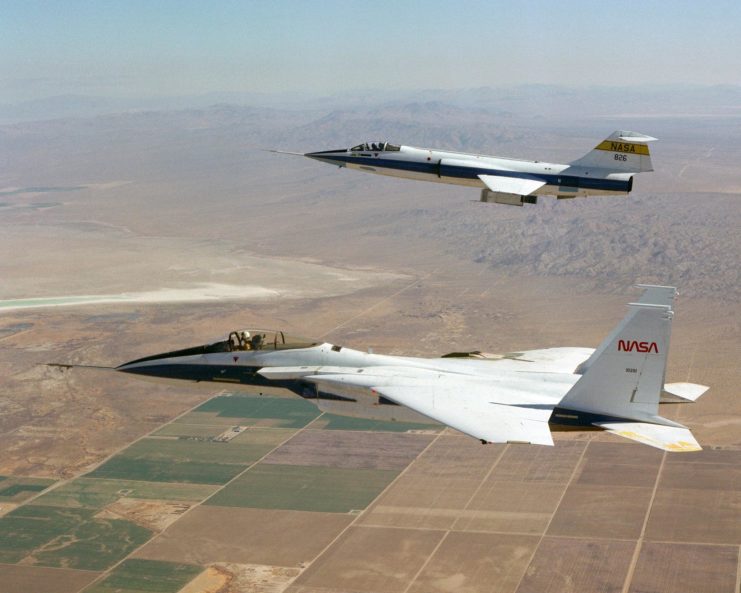
In 2011, Starfighters Inc., a private F-104 operator, and 4Frontiers Corporation began looking into launching suborbital sounding rockets from Starfighters flown from Kennedy Space Center in Florida.
